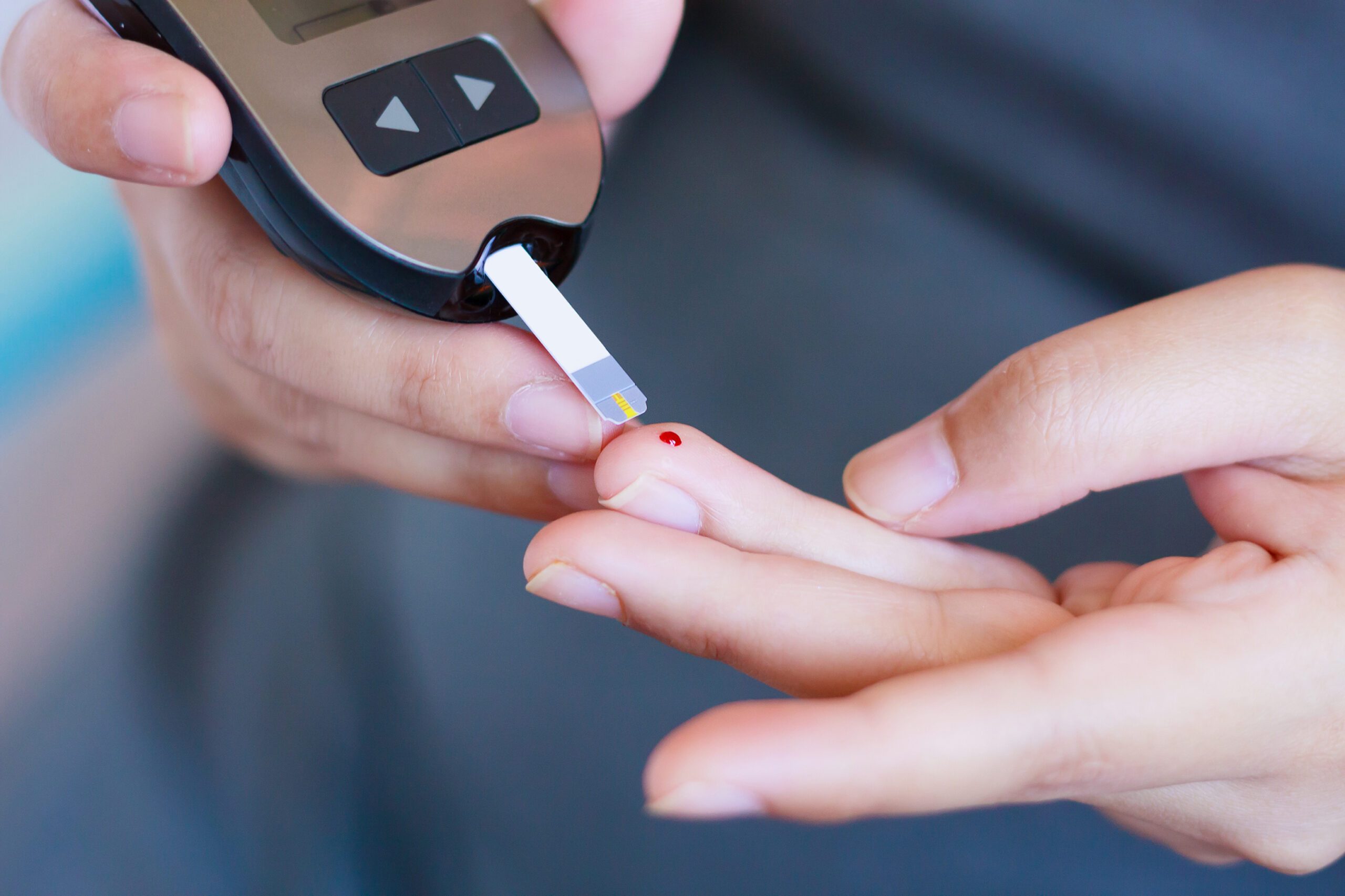Blood sugar, also known as blood glucose, refers to the amount of glucose (a type of sugar) present in the bloodstream. It is the body’s primary source of energy, fueling the brain, muscles, and organs.
When we eat simple or refined carbohydrates (like bread, pasta, fruits, and sweets), the body breaks them down into glucose. This glucose enters the bloodstream and is transported to cells for energy. The pancreas releases insulin, a hormone that helps glucose move from the blood into the cells.
When everything functions properly, blood sugar stays within a healthy range – not too high or too low. However, imbalances can occur due to diet, stress, lack of exercise, or medical conditions like diabetes.
What is a Glucose Spike?
It is likely that you have heard of the term glucose spike. A glucose spike occurs when blood sugar levels rise rapidly after eating, especially after consuming refined carbohydrates and sugary foods. This triggers the pancreas to release insulin, which helps cells absorb glucose. However, a sharp rise is often followed by a crash, where blood sugar drops too quickly, leading to fatigue, hunger, cravings, irritability, and even dizziness.
Frequent glucose spikes and crashes put stress on the body, increasing the risk of insulin resistance, weight gain, inflammation, and conditions like type 2 diabetes. Keeping blood sugar stable helps maintain steady energy levels, improves mood, and supports overall metabolic health. The goal is to avoid extreme highs and lows by making simple lifestyle adjustments.
The Best Order to Eat Your Food to Avoid an Insulin Spike
The order in which you eat your food can significantly impact how your body processes glucose. Research shows that eating foods in a specific sequence can help slow glucose absorption and reduce insulin spikes.
- Start with Fiber: Eating vegetables or other fiber-rich foods first helps slow down the absorption of sugars and carbohydrates. Fiber creates a gel-like coating in the stomach, reducing the speed at which glucose enters the bloodstream. Begin your meal with a salad, steamed greens, or roasted vegetables.
- Follow with Protein and Healthy Fats: Protein and healthy fats help stabilize blood sugar by slowing digestion. Eating them before carbohydrates ensures that glucose is released into the bloodstream more gradually. After fiber, eat lean proteins like chicken, fish, eggs, or tofu along with healthy fats from avocado, nuts, olive oil, or cheese.
- Finish with Carbohydrates: Carbs are best eaten last, after fiber, protein, and fat have already begun to slow glucose absorption. This helps prevent insulin spikes and crashes. When you do eat carbs, opt for whole grains, legumes, or starchy vegetables instead of refined options like white bread, pasta, or sweets.
This simple food order hack can significantly improve blood sugar control without requiring major dietary changes.
Start Your Day with Protein and Healthy Fats
A carb-heavy breakfast can cause a quick rise in blood sugar, followed by a crash. Instead, focus on meals that include protein and healthy fats to slow glucose absorption. Good options include scrambled eggs with avocado, Greek yogurt with nuts and seeds, or a protein smoothie with almond butter.
Eat Fiber-Rich Foods
Fiber slows down digestion and prevents glucose spikes. Vegetables such as leafy greens, broccoli, and cauliflower are excellent sources. Whole fruits like apples and pears, when eaten with the skin, also provide fiber. Whole grains like quinoa and oats are better options than refined grains.
Drink Apple Cider Vinegar Before Meals
Apple cider vinegar has been shown to improve insulin sensitivity and reduce blood sugar spikes after eating. Mixing a tablespoon of apple cider vinegar with water before meals can help regulate glucose levels.
Move After Eating
Physical activity after meals helps the muscles absorb glucose more effectively, reducing blood sugar spikes. A 10-15 minute walk, light stretching, or even doing household chores can make a significant difference.
Prioritize Balanced Meals
Each meal should include a balance of protein, fiber, and healthy fats to prevent blood sugar fluctuations. Instead of reaching for processed snacks or sugar-loaded granola bars, choose options like nuts and cheese, chicken with roasted vegetables, or avocado toast on whole grain bread.
Stay Hydrated
Dehydration can cause blood sugar levels to rise by concentrating glucose in the blood. Drinking at least eight glasses of water per day supports proper glucose metabolism. Herbal teas and lemon water are also good alternatives to sugary drinks.
Manage Stress and Get Enough Sleep
Stress and poor sleep can increase cortisol levels, which leads to higher blood sugar. Aim for seven to nine hours of quality sleep each night and practice stress-reducing activities like deep breathing, yoga, or journaling.
Avoid Sugary Drinks and Processed Snacks
Sodas, fruit juices, and highly processed snacks cause rapid blood sugar fluctuations. Instead, choose beverages like sparkling water with lemon, snacks like dark chocolate (85% cacao or higher), nuts, seeds, or homemade trail mix.
Incorporate Cinnamon and Magnesium
Cinnamon has been shown to improve insulin sensitivity, making it a great addition to coffee or oatmeal. Magnesium also plays a role in regulating blood sugar, and foods like pumpkin seeds, spinach, and dark chocolate are excellent sources.
Listen to Your Body
Pay attention to how you feel after eating. If you experience energy crashes, frequent hunger, or strong cravings, adjust your meals by increasing your intake of protein, fiber, and healthy fats.
Maintain Steady Blood Sugar Levels
Following the tips outlined in this article will help you maintain steady blood sugar levels, avoid energy crashes, feel your best throughout the day, and support long-term health.
.




